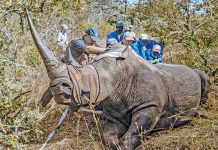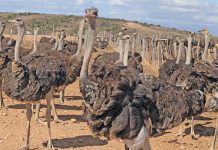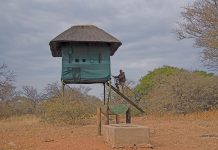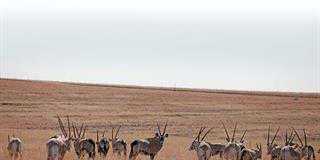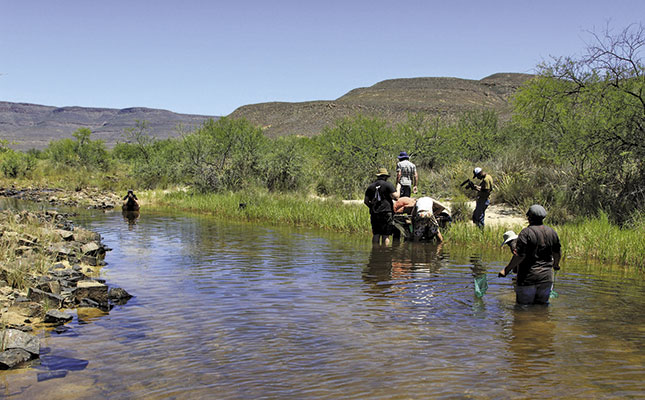
The fynbos-flanked rivers of the Cape Floristic Region support 10% (43 species) of Southern African (excluding Lake Malawi) freshwater fish species, a fine example of the biodiversity for which this region is internationally renowned. Even more remarkable is that 90% of these species occur nowhere else in the world.
However, primarily as a result of the direct impact of alien fish, 60% of these indigenous species are now listed as threatened by the International Union for Conservation of Nature. “The plight of the fynbos fish can be likened to that of the rhino, but few people realise the importance of our river systems as they often fall below the radar,” says fish biologist Dr Bruce Paxton.
Pooling knowledge and resources
In 2012, Farmer’s Weekly reported on efforts by CapeNature and its partners to eradicate invasive alien fish undertaken in the Cederberg’s Rondegat River. This was the initial stage of a greater project encompassing the Olifants-Doring river system, which flows through the region. Since then, a broader partnership has been formed under the Endangered Wildlife Trust’s Cape Critical Rivers Project (CCR).
This includes CapeNature, the Northern Cape’s Department of Environment and Nature Conservation, the Freshwater Research Centre and the Organisation of Tropical Studies. “The Cape Critical Rivers Project is all about partnerships, which enables us to have a bigger positive impact on what we’re doing by combining knowledge and resources,” says Christy Bragg, project manager of the CCR. “We’re also working closely with landowners in the river catchments to ensure community ownership and support for native fish management.”
The Clanwilliam Sandfish
During a survey of the Doring River system in October 2013, a large number of juvenile endangered Clanwilliam sandfish (Labeo seeberi) were unexpectedly found in the Biedouw River, a small tributary off the Doring River. Although reported historically, this species has not been known to spawn in the Biedouw in recent times. This discovery means that the Biedouw is the only documented spawning site outside the Oorlogskloof Nature Reserve. The river could therefore potentially play a crucial role in the survival of the species.
“Unfortunately, due to predation by invasive alien fish and the drying up of the pools during summer, the chance of recruitment from these juveniles in the Biedouw River is minimal,” says Alwyn Lubbe, field officer for CCR. The greatest threat to the survival of the Clanwilliam sandfish and other fynbos species comes from largemouth bass and bluegill sunfish. Both of these alien species prey heavily on juvenile fish and out-compete indigenous fish for food resources.
The Biedouw River Project
Due to the presence of several indigenous freshwater fish species in the Biedouw River, it has been identified by CapeNature as a high-priority river for rehabilitation, which includes the eradication of alien fish. In November 2014, an interim conservation intervention was undertaken to relocate sandfish fingerlings from the lower reaches of the river to permanent alien-fish-free pools above a natural bass-barrier in the upper reaches of the Biedouw gorge.
“We’re confident that in this protected environment the fingerlings will reach a bass-proof size and that they will breed and contribute to establishing a viable population in the Biedouw and greater Olifants-Doring river system,” Lubbe says.
Safe havens
Conservation interventions planned for the near future include the construction of an alien fish-proof barrier across the lower reaches of the Biedouw River. “The weir will be high enough to ensure that alien fish can’t breach it but low enough to enable the annual spawning runs of the indigenous fish to take place.
“The alien species will then be cleared from the stretch upstream of the weir, creating a safe haven for the indigenous fish,” Lubbe explains.The main focus of fish conservation efforts in the Cape Floristic Region is to turn the upper reaches of minor tributaries such as the Biedouw into safe havens for indigenous fish. This is a feasible approach to ensure the survival of sustainable populations of endangered indigenous fish.
It is widely accepted that the main stem rivers are beyond saving and will remain the domain of alien fish species.
Phone Christy Bragg on 082 332 5447.

